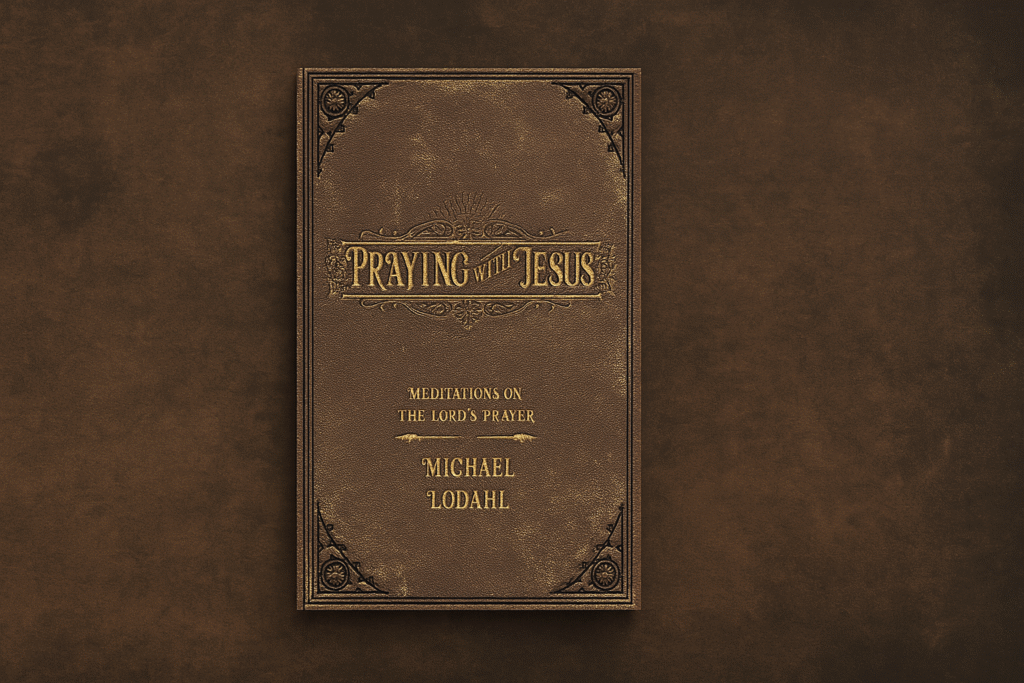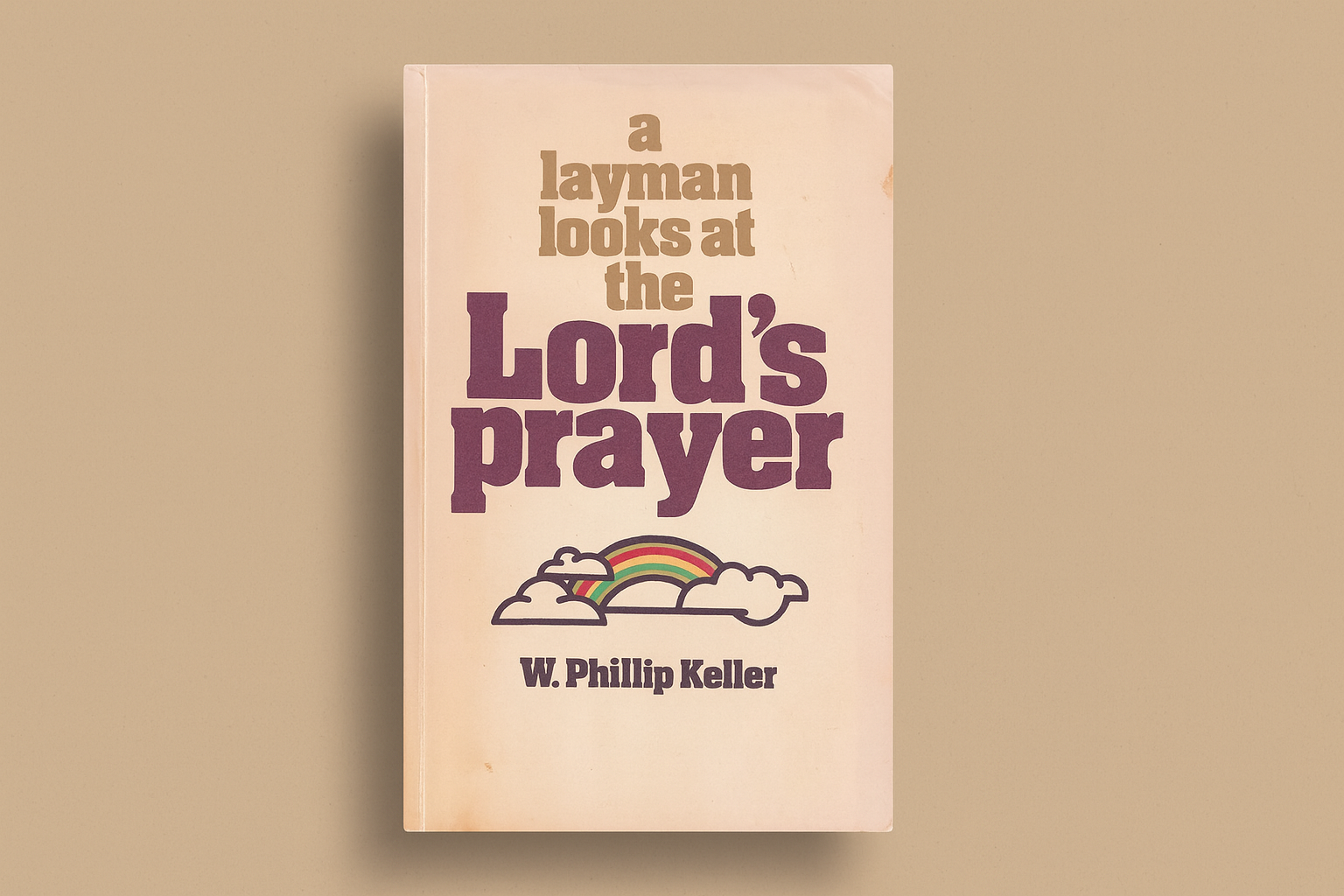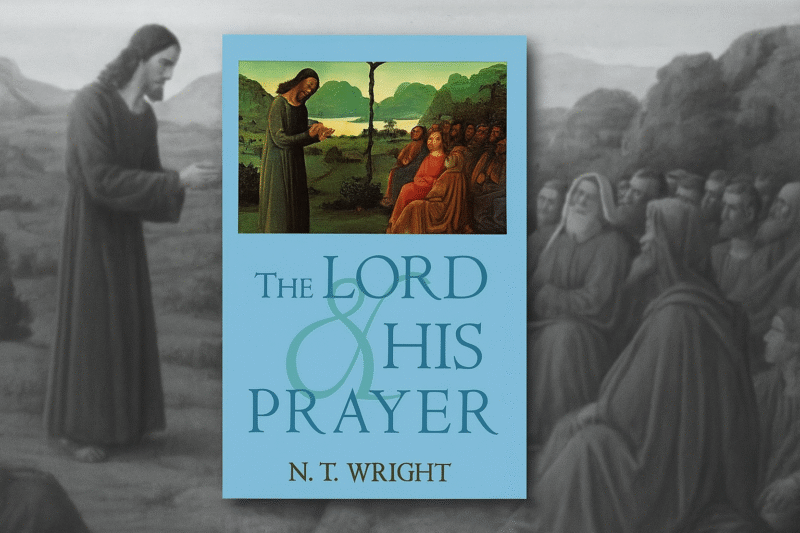
Drawn to help others rediscover the significance of the Lord’s Prayer, Michael Lodahl took a sermon series he preached many years ago and released Praying With Jesus: Meditations on the Lord’s Prayer through The Foundry Publishing in 2022. At just about 110 pages, Michael Lodahl offers meaningful reflections in a powerful, concise, and engaging read that seeks to rediscover the powerful impact of praying this prayer together. While there is value in spontaneity—and habits can at times become rituals that are detrimental—there is also great benefit in forming good spiritual habits. At the center of such habits for the follower of Jesus is the Lord’s Prayer. This is a prayer that tethers us to who God is and what Jesus embodied, announced, and demonstrated in his earthly ministry. When this prayer becomes part of who we are, it “can help shape and guide our hearts, our emotions, our longings for God. It can give us words—tested and tried over centuries of use—when our own words seem to fail us” (Lodahl 2022, 12).
A Prayer Prayed Communally, Even Individually
This prayer is a communal prayer, though this book looks at it much more from a theological reflection and individual practice. Even when we are praying individually, we are praying communally. Michael Lodahl shares, “Because we pray as a people, even when we pray alone, we are incorporated together as a people into the beauty of Jesus’s relationship to his Father” (Lodahl 2022, 17). Lodahl also argues that the Lord’s Prayer is a soul-wrenching, searching prayer like Psalm 139. Psalm 139, Lodahl describes this as a “radically self-searching, individual prayer [that] is also communal prayer,” it is a prayer that “you can hear this prayer still being prayed today in synagogues around the world” (Lodahl 2022, 23). The pattern for prayer that Jesus gave his disciples and listeners on the hillside is much like this. It is a prayer that gets in us, transforms us, guides us, and reminds us all of what Jesus taught and did. It is radically self-searching, but also an individual prayer that is communal.
An Inside Look at Praying With Jesus
In the first chapter, Lodahl wrestles with what it means to address God as our Father. He unpacks what Jesus taught us about the Father and challenges earthly fathers to aspire to reflect this divine example. However, there is more at play. God is our Father in heaven—unlike earthly fathers, set apart from us, and wholly other. God is a heavenly Father. The term “Father,” or Abba, serves as a symbolic illustration of who God is: “God is symbolized as loving, caring, deeply invested and involved, and knowing our needs” (Lodahl 2022, 29–30).
As the book moves into the second chapter, Lodahl reflects on what it means for God’s name to be hallowed. This part of the prayer invites us to long for God’s name to be missionally proclaimed in the places we live, work, worship, and play. More than that, it moves us toward confession and repentance—so that our lives might be sanctified and made worthy to call upon God’s name. Lodahl writes that at this point in the prayer we are essentially saying, “may our lives be such that we sanctify your name, that we bring honor to who you are,” and in doing so, we pray a deeply “profoundly countercultural, and thus a very dangerous, prayer” (Lodahl 2022, 38). The imagery that comes to mind is Jesus cleansing the temple—restoring it as a holy space.
In chapter three, Lodahl turns to the impact of praying, “Your Kingdom Come.” Like many scholars—and resonating with my own convictions—he separates the call for God’s Kingdom from the plea for God’s will. He writes, “When we pray for God’s kingdom to come, we acknowledge that none of our kingdoms is God’s. Simply praying this is already a judgment upon our pretensions to erect a kingdom that could possibly represent God’s character, will, and intentions” (Lodahl 2022, 42). To pray for God’s Kingdom—God’s righteous rule on earth—is to embrace a reordered life: “then that reorders all the other cares, concerns, and agendas of our lives” (Lodahl 2022, 43).
In chapter four, Lodahl reflects on the prayer, “Give us this day,” as a powerful reminder of our human inadequacy. To pray these words is to acknowledge a fundamental fact about ourselves: we are not self-sufficient. Lodahl writes, “The fact that we must eat is a strong indication that we are not self-sufficient, self-reliant, isolated beings” (Lodahl 2022, 57). This daily prayer becomes an essential reminder that “we truly do need ‘our daily bread’ to sustain our fragile lives, to keep our bodies from premature disintegration” (Lodahl 2022, 62). While “bread” represents all that we need for daily sustenance, it also points us to the deeper reality that our ultimate provision and sustaining come only through Jesus and God our Father.
Chapter Five explores what it means to address our need for forgiveness and the need to forgive others. This was a challenging and convicting chapter. As we pray this line, Lodahl mentions, “Jesus is not encouraging his followers to keep a private record of their personal sinlessness. Rather, he urges us to recognize that we are members of a body in which harm has been done by word, deed, and attitude—or by the omission of a word or deed when it was needed” (Lodahl 2022, 73). We are facing the harm we have done to God and others, by doing something or not doing something, and we are learning to release others from the same.
I was happy to see Lodahl keep the petition “Lead us not into temptation” and “deliver us” as one and the same request. This aligns with my own conviction and understanding. Though this was not one of the most thorough chapters in the book, I appreciated his reminder that this line “might be understood roughly to be, ‘Deliver us, God, from the worst of the time of testing that is approaching’” (Lodahl 2022, 93–94). To break this idea down into greater simplicity, he notes that “what Jesus teaches us to pray is for easier tests. Need I add that there is nothing wrong with that” (Lodahl 2022, 96).
A Look at Michael Lodahl
At the time of this book, Michael Lodahl was serving as the professor of theology at Point Loma Nazarene University. Point Loma Nazarene University is a Christian liberal arts college. Its main campus is located on the oceanfront in San Diego, California, United States. Lodahl is still serving full-time at PLNU, as Professor of Theology & World Religions, and has been since 1999. He also taught at Northwest Nazarene University in Idaho. All together, he has written or edited over 11 books. Lodahl had pastored a few churches, but served as an ordained elder in the Church of the Nazarene – serving congregations in California, Georgia, and Idaho. A lifelong learner himself, his PhD in theological studies came from Emory University, where he extensively pursued studies in Israel and Jordan. He and his wife live in San Diego.
Why I Read Praying With Jesus
As a Doctor of Ministry student at Kairos University, my research explores the pattern of prayer given by Jesus, commonly known as the Lord’s Prayer in Matthew 6:9-13, as both a theological and practical framework for spiritual formation and communal discipleship. This book was right on point with my field of research. Honestly, though there have been many favorites, this has been one of my favorites to have read so far, and it deals with the Lord’s Prayer in some very practical and theological ways. You can learn more about my journey here.
A Critical Look at Praying With Jesus
Overall, this was a fairly easy read, with thoughtful insights and a good use of supporting Scripture. Lodahl offers meaningful glimpses into what happens when we pray the Lord’s Prayer and how it can bring transformation to our lives. I would have liked to see a more comprehensive compilation of Jesus’ teachings related to each line of the prayer, as well as a deeper engagement with church history. That said, I was grateful that, even though Lodahl comes from a Nazarene background, his approach is deeply evangelical and relevant across many denominational lines.
A Read Worth Reading
I think this is a great short and simple read for anyone interested in the Lord’s Prayer. The book addresses the pattern of prayer given to us by Jesus in both beautiful and practical ways. A better understanding of the Lord’s Prayer can lead to greater effectiveness in our own prayers, and these meditations provide a meaningful glimpse into that deeper understanding. Lodahl writes in a humble and accessible manner, making this book a helpful resource for readers at any stage of their spiritual journey.



